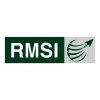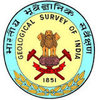GIS Analyst
30+ GIS Analyst Interview Questions and Answers

Asked in Trimble

Q. What is a buffer, and what are its applications or uses?
A buffer is a zone around a geographic feature that is used for analysis or visualization purposes.
Buffers are commonly used in GIS to analyze proximity, connectivity, and accessibility.
They can be used to identify areas within a certain distance of a feature, such as a buffer zone around a school to determine areas within a 1-mile radius.
Buffers can also be used for visualizing data, such as creating a buffer around a river to show areas that may be affected by flooding.
They...read more
Asked in Geoinfosys Technologies

Q. GIS components and how to resolve topological error
GIS components include data, software, hardware, and people. Topological errors can be resolved using tools like topology rules and editing.
GIS components include data, software, hardware, and people.
Topological errors can be resolved using topology rules and editing.
Topology rules ensure that features are connected and do not overlap.
Editing tools like snapping and tracing can help fix topological errors.
Examples of topological errors include gaps, overlaps, and slivers.
GIS Analyst Interview Questions and Answers for Freshers
Asked in Geoinfosys Technologies

Q. What is resolution, type of resolution?
Resolution refers to the level of detail in a GIS dataset. It can be spatial, temporal, spectral, or radiometric.
Spatial resolution refers to the size of the smallest feature that can be detected in an image or dataset.
Temporal resolution refers to the frequency at which data is collected over time.
Spectral resolution refers to the number and width of the bands in a multispectral image.
Radiometric resolution refers to the number of bits used to represent the brightness values...read more
Asked in Kentrix Solutions

Q. What is topology, and can you provide examples of common topological errors?
Topology in GIS refers to the spatial relationships between geographic features, ensuring data integrity and accuracy.
Topology defines how points, lines, and polygons relate to each other in space.
Common topological errors include:
1. Overlapping polygons: Two polygons occupy the same space, causing ambiguity.
2. Gaps between polygons: Adjacent polygons do not touch, leading to data inconsistencies.
3. Dangling nodes: A line feature ends without connecting to another line or po...read more

Asked in Square Yards

Q. Can you provide a real-life example of building a structure in a hilly area using RS and GIS techniques?
RS and GIS techniques can be used to identify suitable locations for building structures in hill areas.
Use digital elevation models (DEMs) to identify suitable areas with gentle slopes
Analyze the soil type and stability of the hill area using remote sensing data
Use GIS to identify potential hazards such as landslides and erosion
Consider the impact of the structure on the surrounding environment and ecosystem
Use RS and GIS to monitor the construction process and ensure complia...read more
Asked in Stronghold Investment Management

Q. What is the difference between Shapefile and Geodatabase?
Shapefiles are simple, flat file formats for GIS data, while Geodatabases are more complex, structured databases for spatial data management.
Shapefiles consist of multiple files (.shp, .shx, .dbf) and are less efficient for large datasets.
Geodatabases can store multiple datasets in a single file or folder, supporting complex data types.
Shapefiles have limitations on attribute field names and types, while Geodatabases support advanced data types like raster and topology.
Geodat...read more
GIS Analyst Jobs



Asked in Kentrix Solutions

Q. How do you generate heatmaps using Geographic Information Systems (GIS)?
Heatmaps visualize data density across geographic areas, highlighting patterns and trends in spatial data.
1. Collect data points: Gather location-based data, such as crime incidents or disease outbreaks.
2. Choose a GIS software: Use tools like ArcGIS, QGIS, or MapInfo for heatmap generation.
3. Create a point layer: Import your data as a point layer in the GIS software.
4. Apply heatmap tool: Use the heatmap or kernel density estimation tool to visualize data density.
5. Adjust ...read more

Asked in Trimble

Q. What are some basic SQL queries used in GIS data analysis?
Basic SQL queries used in GIS data involve selecting, filtering, and joining spatial data.
Selecting specific columns: SELECT column1, column2 FROM table_name
Filtering data based on conditions: WHERE condition
Joining tables: JOIN table1 ON table1.column = table2.column
Share interview questions and help millions of jobseekers 🌟


Asked in Aksentt Tech Services

Q. What is GIS?
GIS stands for Geographic Information System. It is a system designed to capture, store, analyze, manage, and present spatial or geographic data.
GIS is used to create maps and visualize data in a spatial context.
It combines various data sources like satellite imagery, aerial photographs, and survey data.
GIS allows for spatial analysis, such as finding the shortest route between two points or identifying areas prone to flooding.
It is widely used in urban planning, environmenta...read more
Asked in Proxima Geospatial Services

Q. How to remove the error. What is georeference?
Georeferencing is the process of aligning spatial data to a known coordinate system to remove errors and ensure accurate positioning.
Georeferencing involves assigning spatial coordinates to data points based on a reference system.
Common methods include using control points, GPS data, or known landmarks to align data accurately.
Georeferencing is essential for GIS analysis, mapping, and spatial data visualization.
Errors in georeferencing can lead to inaccuracies in spatial anal...read more

Asked in Worley

Q. Experience in network design and planning
I have experience in network design and planning.
I have designed and planned networks for various organizations.
I am proficient in using network analysis tools such as ArcGIS Network Analyst.
I have experience in optimizing network performance and identifying network vulnerabilities.
I have worked on projects involving network expansion and redesign.
I have collaborated with IT teams to ensure network compatibility with other systems.
Asked in Geoinfosys Technologies

Q. What is the difference between spectral and spatial resolution?
Spectral resolution refers to the ability to distinguish between different wavelengths of electromagnetic radiation, while spatial resolution refers to the ability to distinguish between different locations on the ground.
Spectral resolution is measured in terms of the number of bands in an image and the width of each band.
Spatial resolution is measured in terms of the size of each pixel in an image.
Higher spectral resolution allows for more detailed analysis of the compositio...read more

Asked in RMSI

Q. What is spatial analysis in GIS?
Spatial analysis in GIS is the process of examining spatial data to understand patterns, relationships, and trends in geographic information.
It involves analyzing the spatial relationships between different geographic features.
Spatial analysis helps in making informed decisions by identifying patterns and trends in the data.
Examples include proximity analysis, overlay analysis, and spatial statistics.
It can be used for various applications such as site selection, resource man...read more

Asked in Carrier

Q. What is the use of attribute transfer mapping?
Attribute transfer mapping is the process of transferring attributes from one dataset to another based on spatial relationships.
It involves transferring attributes such as population data or land use classifications from one layer to another.
This can be useful for spatial analysis, visualization, and decision-making.
For example, transferring crime data from police precinct boundaries to census tracts for analysis.

Asked in Cybertech Systems & Software

Q. What is firewall? Explain types
Firewall is a security system that monitors and controls incoming and outgoing network traffic.
Firewalls can be hardware or software-based
Types of firewalls include packet-filtering, stateful inspection, and application-level
Packet-filtering firewalls examine packets and filter them based on pre-defined rules
Stateful inspection firewalls keep track of the state of network connections and filter traffic based on that information
Application-level firewalls filter traffic based ...read more

Asked in RMSI

Q. What is a web mapping application?
A web mapping application is a tool that allows users to interact with and visualize geographic data on a web browser.
Web mapping applications use various technologies such as GIS software, web development languages, and APIs.
Users can view maps, search for locations, get directions, and perform spatial analysis.
Examples include Google Maps, ArcGIS Online, and Mapbox.

Asked in BlackBuck

Q. What is GPS?
GPS stands for Global Positioning System. It is a satellite-based navigation system that provides location and time information.
GPS is a network of satellites that orbit the Earth.
It uses signals from these satellites to determine the precise location of a GPS receiver.
GPS can provide accurate positioning information anywhere on Earth, as long as there is a clear line of sight to at least four satellites.
It is commonly used in navigation systems, mapping, surveying, and vario...read more

Asked in Avineon India

Q. How many types of threads are there in AutoCAD?
There are two types of threads in AutoCAD: geometric threads and annotation threads.
Geometric threads are created using the THREAD command and are represented as 3D solid objects.
Annotation threads are created using the MLEADER command and are used for adding threaded annotations to drawings.
Geometric threads are used for modeling purposes, while annotation threads are used for documentation and communication.
Both types of threads can be customized in terms of size, style, an...read more
Asked in Geoinfosys Technologies

Q. Satellite image and toposheet difference
Satellite images are captured from space while toposheets are 2D maps of the earth's surface.
Satellite images are captured from space using satellites and provide a bird's eye view of the earth's surface.
Toposheets are 2D maps of the earth's surface that show the terrain, elevation, and other features.
Satellite images are more detailed and can capture changes over time, while toposheets are static and provide a general overview.
Satellite images are useful for monitoring natur...read more

Asked in Cybertech Systems & Software

Q. What are Components of GIS
Components of GIS include hardware, software, data, people, and methods.
Hardware: computers, GPS devices, scanners, printers, etc.
Software: GIS software, database management systems, image processing software, etc.
Data: spatial data, attribute data, metadata, etc.
People: GIS professionals, data collectors, analysts, etc.
Methods: data collection, analysis, visualization, etc.
Examples: ArcGIS, QGIS, Google Earth, OpenStreetMap, etc.

Asked in Aksentt Tech Services

Q. What tools are mainly used in GIS?
GIS tools include software and hardware for mapping, analyzing, and managing spatial data effectively.
ArcGIS: A comprehensive GIS software suite for mapping and spatial analysis.
QGIS: An open-source alternative to ArcGIS, widely used for various GIS tasks.
Google Earth: A tool for visualizing geographic data in a 3D environment.
GRASS GIS: A powerful open-source GIS software for geospatial data management and analysis.
PostGIS: An extension of PostgreSQL for spatial database man...read more

Asked in Carrier

Q. What is the use of the buffer tool?
Buffer tool is used to create a zone around a feature based on a specified distance.
Creates a buffer zone around a feature
Used to analyze proximity and connectivity
Helps in spatial analysis and planning
Commonly used in environmental studies and urban planning
Example: Creating a buffer zone of 1 mile around a school for safety analysis

Asked in IIC Technologies

Q. What are lines and polylines?
A line is a straight path connecting two points, while a polyline is a series of connected line segments forming a continuous path.
A line is a one-dimensional geometric object with no width or height.
A polyline is made up of multiple line segments connected end-to-end.
Lines and polylines are commonly used in GIS to represent roads, rivers, boundaries, etc.
Example: A road can be represented as a polyline made up of multiple line segments.
Asked in Stesalit Systems

Q. Make geodatabase, dizitized,shapefile create,etc
Creating geodatabases, digitizing data, and creating shapefiles are common tasks for GIS analysts.
Create a geodatabase to store spatial data
Digitize data by converting analog information into digital format
Create shapefiles to represent geographic features
Use GIS software like ArcGIS or QGIS for these tasks

Asked in Avineon India

Q. What are the editing commands?
Editing commands are tools used in GIS software to modify, update, or create spatial data.
Editing commands include tools for creating new features, modifying existing features, and deleting features.
Examples of editing commands are 'Create Feature', 'Edit Feature', and 'Delete Feature'.
These commands are essential for maintaining accurate and up-to-date spatial data in GIS projects.
Asked in Stronghold Investment Management

Q. Do you know about PLSS?
PLSS stands for Public Land Survey System, a method for surveying and dividing land in the United States.
PLSS was established in the late 18th century to facilitate land sales and settlement.
It divides land into townships, which are 6 miles square, further divided into sections of 1 square mile.
Each section can be subdivided into smaller parcels, such as quarters or eighths.
PLSS is primarily used in the western United States, while the eastern states often use metes and bound...read more

Asked in Carifer Technologies

Q. What is your current salary?
My current salary is competitive and reflects my experience and skills in GIS analysis, along with industry standards.
My current salary is $70,000 annually, which is in line with the average for GIS Analysts in my region.
I have received raises based on performance and additional certifications, such as GIS Professional (GISP).
I also consider benefits and opportunities for growth when discussing salary, as they contribute to overall compensation.

Asked in MagicBricks

Q. What is your expected salary?
I expect a salary that reflects my skills, experience, and the industry standards for GIS Analysts in this region.
Research industry standards: For example, GIS Analysts in my area typically earn between $60,000 and $80,000 annually.
Consider my experience: With over 5 years in GIS, I believe a salary towards the higher end of the range is justified.
Factor in the job responsibilities: If the role involves advanced analysis or project management, I would expect a higher salary.

Asked in Geological Survey of India

Q. Rock types and Fossils
Rock types and fossils are important in GIS analysis for understanding geological formations and history.
Rock types can help identify different geological formations and understand the history of an area.
Fossils found in rocks can provide information about past environments and the evolution of life.
GIS analysis can be used to map out the distribution of different rock types and fossils in an area.
Understanding rock types and fossils can help in various applications such as m...read more

Asked in IIC Technologies

Q. command of CAD GIS
CAD GIS refers to the integration of Computer-Aided Design and Geographic Information Systems.
CAD GIS involves using CAD software to create detailed maps and spatial data
It combines the precision of CAD with the spatial analysis capabilities of GIS
Examples include creating 3D models of buildings within a GIS environment
Interview Questions of Similar Designations
Interview Experiences of Popular Companies








Reviews
Interviews
Salaries
Users

















